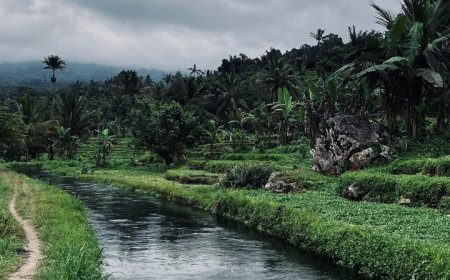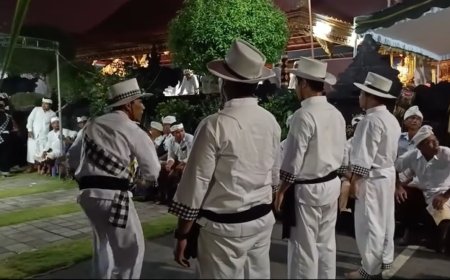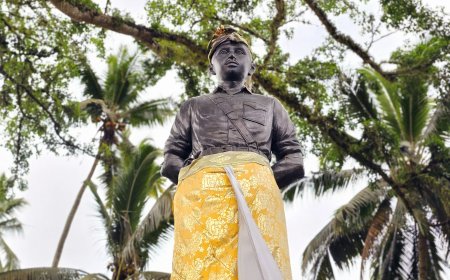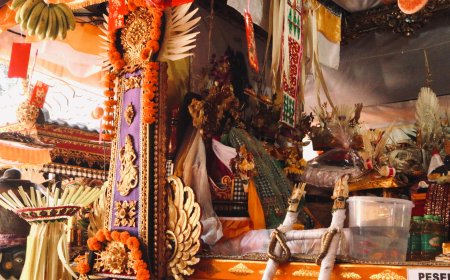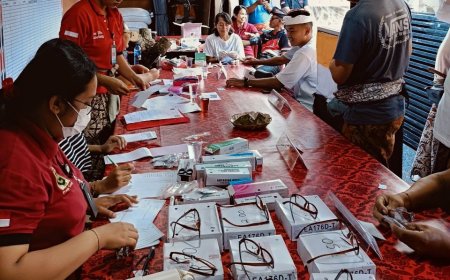The Sacred Meaning Behind Mlaspas, Mecaru, and Mendem Pedagingan: Unveiling the Profound Rites of Rsi Gana
The Rsi Gana ceremony is a sacred ritual in the Balinese Hindu tradition aimed at purifying holy structures such as temples and statues. It consists of three stages: Mlaspas, Mecaru, and Mendem Pedagingan. This ritual fosters balance between humans, nature, and the gods. Additionally, Rsi Gana is part of major ceremonial events like Ngenteg Linggih and Ngusaba Nini in the Adat Village of Mengwitani, serving as an expression of gratitude for prosperity.
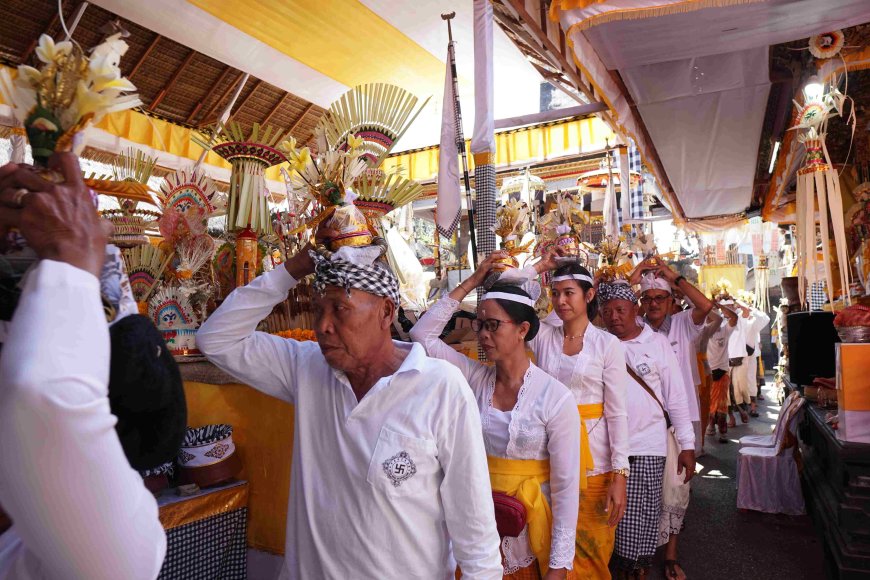
The Rsi Gana ceremony is one of the sacred rituals in the Balinese Hindu tradition, carrying profound spiritual significance. This ritual is performed as part of the purification process for sacred structures such as temples, shrines, or statues. Rsi Gana is also a key part of larger ceremonies like Ngenteg Linggih and Ngusaba Nini in the Adat Village of Mengwitani. The ceremony consists of three main stages: Mlaspas, Mecaru, and Mendem Pedagingan. These stages hold symbolic meanings that reflect the balance between humans, nature, and the gods. Additionally, the ceremony ensures that sacred sites and religious instruments are physically and spiritually prepared for use in the grand ceremonial process.
Mlaspas is the initial stage in the Rsi Gana ceremony, aimed at purifying new buildings. The term "mlaspas" comes from the Balinese words "mlas," meaning to release, and "pas," meaning to fit or be appropriate. Therefore, Mlaspas is a ritual that reunites separated elements into a complete unity. This ritual removes negative energies and invites sacred forces to bless the building. During the ceremony, holy water (tirta), leaves, flowers, and rice are used as symbols of purification. In addition to physical cleansing, Mlaspas also imparts spiritual strength to the structure, making it suitable for worship or religious activities.
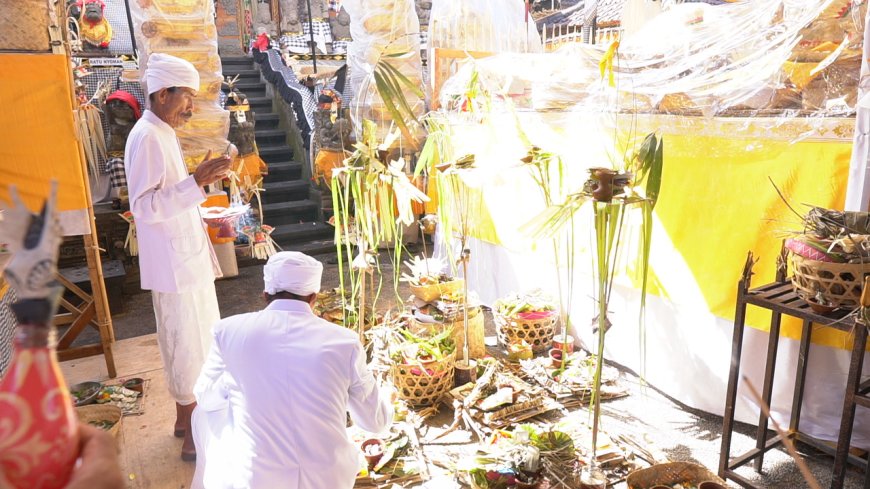
The Mlaspas Ceremony Sequence (Source: Personal Collection)
The second stage is Mecaru, which aims to purify the air and the entire earth's contents while maintaining the balance of nature. In Balinese Hindu tradition, the construction of new buildings is believed to potentially disrupt the surrounding energy balance. Therefore, Mecaru is also performed as a form of apology to spirits and unseen beings that might have been disturbed. The Mecaru ritual involves the creation of banten caru, offerings typically consisting of various foods such as rice, chicken, and symbolic elements of nature. These offerings symbolize harmony between humans and nature, as well as creating peace with the invisible entities in the environment.
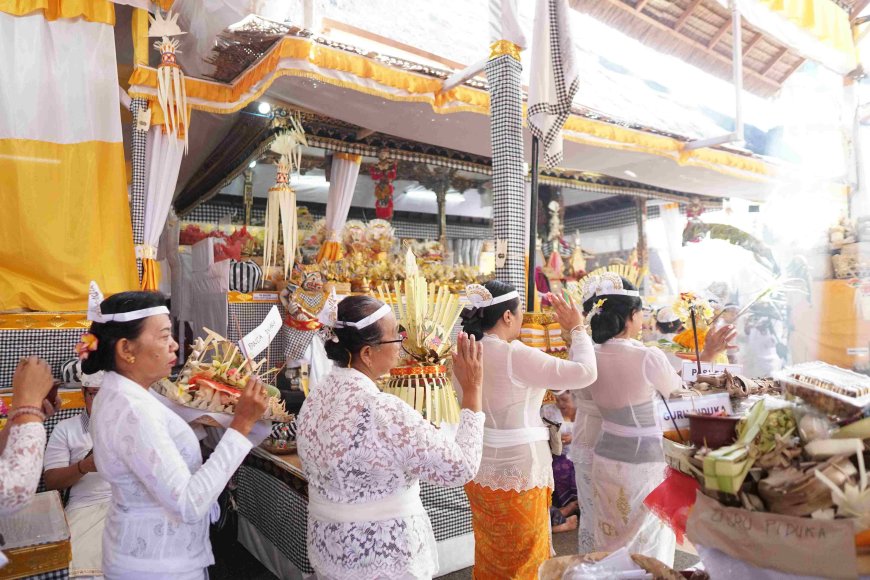
The Process of Mecaru Ceremony (Source: Personal Collection)
The final stage in the Rsi Gana ceremony is Mendem Pedagingan. This procession is the core of the ritual, involving the burial of pedagingan along with other elements considered to be the soul or spiritual strength of the structure. This pedagingan typically include metals, gemstones, and various elements from the earth, as well as sacred symbols that have undergone special purification and blessing rituals. Mendem Pedagingan aims to bind spiritual energy to the newly constructed building. After this procession, the building is considered to have spiritual life and is ready for religious activities. Additionally, the buried items serve to protect the structure from negative influences or evil forces that could disrupt its function as a sacred space.
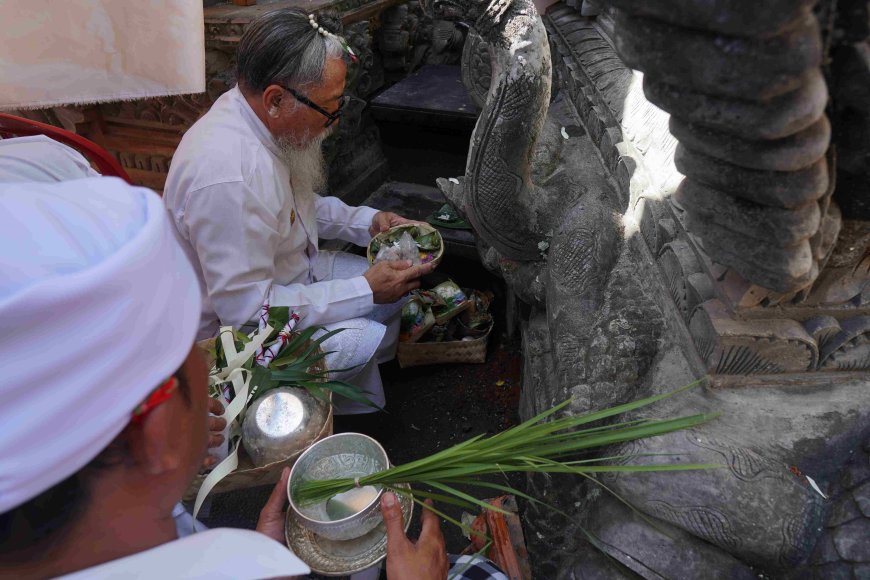
Ceremony of Mendem Pedagingan (Source: Personal Collection)
However, over time, the magnetic strength of the spiritual energy likened to a magnet begins to diminish after the building reaches more than 30 years of age. Therefore, ceremonies are typically held after 30 years, as it is believed that the magnetic power has waned. When that time comes, the previously buried pedagingan is layered with new pedagingan in a procession known as Mupuk Pedagingan. This ritual not only continues the tradition but also reinforces the existing spiritual energy, ensuring that the building continues to receive blessings and protection from the divine powers of Ida Sang Hyang Widhi Wasa.




















